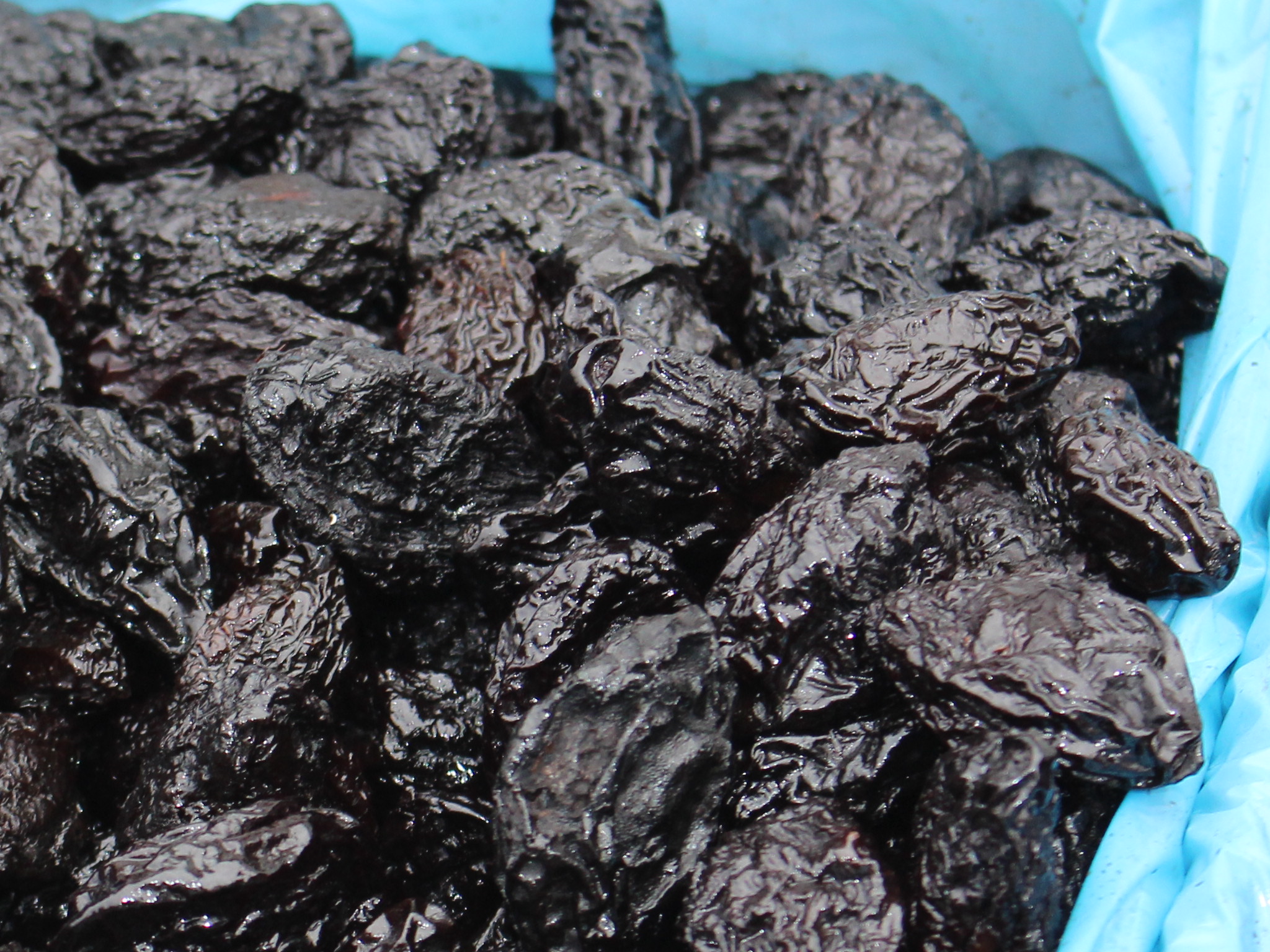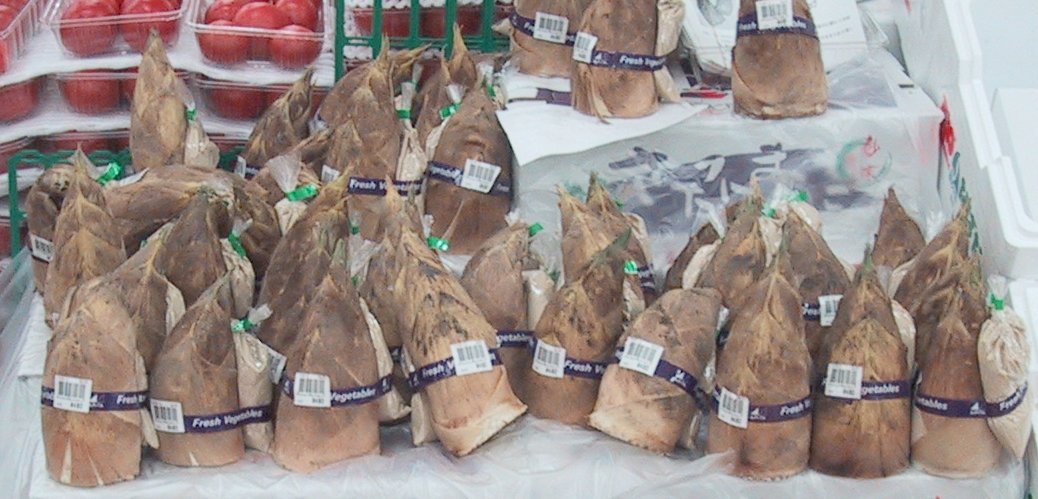|
Chlorogenate
Chlorogenic acid (CGA) is the ester of caffeic acid and quinic acid, functioning as an intermediate in lignin biosynthesis. The term chlorogenic acids refers to a related polyphenol family of esters, including hydroxycinnamic acids (caffeic acid, ferulic acid and ''p''-coumaric acid) with quinic acid. Despite the "chloro" of the name, chlorogenic acids contain no chlorine. Instead, the name comes from the Greek χλωρός (khloros, light green) and -γένος (genos, a suffix meaning "giving rise to"), pertaining to the green color produced when chlorogenic acids are oxidized. Structural properties Structurally, chlorogenic acid is the ester formed between caffeic acid and the 3-hydroxyl of L-quinic acid. Isomers of chlorogenic acid include the caffeoyl ester at other hydroxyl sites on the quinic acid ring: 4-''O''-caffeoylquinic acid (cryptochlorogenic acid or 4-CQA) and 5-''O''-caffeoylquinic acid (neochlorogenic acid or 5-CQA). The epimer at position 1 has not yet been ... [...More Info...] [...Related Items...] OR: [Wikipedia] [Google] [Baidu] |
Ester
In chemistry, an ester is a compound derived from an acid (either organic or inorganic) in which the hydrogen atom (H) of at least one acidic hydroxyl group () of that acid is replaced by an organyl group (R). These compounds contain a distinctive functional group. Analogues derived from oxygen replaced by other chalcogens belong to the ester category as well. According to some authors, organyl derivatives of acidic hydrogen of other acids are esters as well (e.g. amides), but not according to the IUPAC. Glycerides are fatty acid esters of glycerol; they are important in biology, being one of the main classes of lipids and comprising the bulk of animal fats and vegetable oils. Lactones are cyclic carboxylic esters; naturally occurring lactones are mainly 5- and 6-membered ring lactones. Lactones contribute to the aroma of fruits, butter, cheese, vegetables like celery and other foods. Esters can be formed from oxoacids (e.g. esters of acetic acid, carbonic acid ... [...More Info...] [...Related Items...] OR: [Wikipedia] [Google] [Baidu] |
Cynarine
Cynarine is a hydroxycinnamic acid derivative (chemistry), derivative and a biologically active chemical constituent of artichoke (''Cynara cardunculus''). Chemically, it is an ester formed from quinic acid and two units of caffeic acid. See also * Chlorogenic acid References Hydroxycinnamic acid esters Hydroxycinnamic acid glycosides Quinic acid esters Catechols {{aromatic-stub ... [...More Info...] [...Related Items...] OR: [Wikipedia] [Google] [Baidu] |
Prune
A prune is a dried plum, most commonly from the European plum (''Prunus domestica'') tree. Not all plum species or varieties can be dried into prunes. Use of the term ''prune'' for fresh plums is obsolete except when applied to varieties of plum grown for drying. In this usage, a prune is the firm-fleshed plum fruit of ''P. domestica'' varieties that have a high soluble solids content, and do not ferment during drying. Most prunes are ''freestone'' cultivars (i.e., the pit is easy to remove), whereas most plums grown for fresh consumption are ''clingstone'' (the pit is more difficult to remove). The sorbitol content of dietary fiber likely provides the laxative effect associated with consuming prunes. Prunes are 64% carbohydrates, including dietary fiber, 2% protein, a rich source of vitamin K, and a moderate source of B vitamins and dietary minerals. Production More than 1,000 plum cultivars are grown for drying. The main cultivar grown in the United States is the 'Improv ... [...More Info...] [...Related Items...] OR: [Wikipedia] [Google] [Baidu] |
Peach
The peach (''Prunus persica'') is a deciduous tree first domesticated and Agriculture, cultivated in China. It bears edible juicy fruits with various characteristics, most called peaches and the glossy-skinned, non-fuzzy varieties called nectarines. Peaches and #Nectarines, nectarines are the same species, though they are regarded commercially as different fruits. The tree is regarded as handsome and is planted in gardens for its springtime blooms in addition to fruit production. The peach tree is relatively short lived, usually not exceeding twenty years of age. However, the peach fruit is regarded as a symbol of longevity in several East Asian cultures. The specific name ''persica'' refers to its widespread cultivation in Persia (modern-day Iran), from where it was transplanted to Europe and in the 16th century to the Americas. It belongs to the genus ''Prunus'', which also includes the cherry, apricot, almond, and plum, and which is part of the Rosaceae, rose family. The p ... [...More Info...] [...Related Items...] OR: [Wikipedia] [Google] [Baidu] |
Eggplant
Eggplant (American English, US, Canadian English, CA, Australian English, AU, Philippine English, PH), aubergine (British English, UK, Hiberno English, IE, New Zealand English, NZ), brinjal (Indian English, IN, Singapore English, SG, Malaysian English, MY, South African English, ZA, Sri Lankan English, SLE), or baigan (Languages of India, IN, Caribbean English, GY) is a plant species in the Solanaceae, nightshade family Solanaceae. ''Solanum melongena'' is grown worldwide for its edible fruit, typically used as a vegetable in cooking. Most commonly purple, the spongy, absorbent fruit is used in List of cuisines, several cuisines. It is a berry (botany), berry by botany, botanical definition. As a member of the genus ''Solanum'', it is related to the tomato, chili pepper, and potato, although those are of the Americas region while the eggplant is of the Eurasia region. Like the tomato, its skin and seeds can be eaten, but it is usually eaten cooked. Eggplant is nutritionally ... [...More Info...] [...Related Items...] OR: [Wikipedia] [Google] [Baidu] |
Hibiscus Sabdariffa
Roselle (''Hibiscus sabdariffa'') is a species of flowering plant in the genus ''Hibiscus'' that is native to Africa, most likely West Africa. In the 16th and early 17th centuries it was spread to Asia and the West Indies, where it has since become naturalized in many places. The stems are used for the production of bast fibre and the dried cranberry-tasting calyces are commonly steeped to make a popular infusion known by many names, including carcade. Description Roselle is an annual or perennial herb or woody-based subshrub, growing to tall. The leaves are deeply three- to five-lobed, long, arranged alternately on the stems. The flowers are in diameter, white to pale yellow with a dark red spot at the base of each petal, and have a stout, conspicuous calyx at the base, wide, enlarging to and becoming fleshy and a deep crimson red as the fruit matures, which takes about six months. Names Asia Roselle is known as ( كركديه) in Arabic, (ချဉ်ပေ ... [...More Info...] [...Related Items...] OR: [Wikipedia] [Google] [Baidu] |
Calluna Vulgaris
''Calluna vulgaris'', common heather, ling, or simply heather, is the sole species in the genus ''Calluna'' in the flowering plant family Ericaceae. It is a low-growing evergreen shrub growing to tall, or rarely to and taller, and is found widely in Europe and Asia Minor on acidic soils in open sunny situations and in moderate shade. It is the dominant plant in most heathland and moorland in Europe, and in some bog vegetation and acidic pine and oak woodland. It is tolerant of grazing and regenerates following occasional burning, and is often managed in nature reserves and grouse moors by sheep or cattle grazing, and also by light burning. Description ''Calluna'' can reach in height. It has small-scale leaves (less than 2–3 mm long) borne in opposite and decussate pairs, whereas those of '' Erica'' are generally larger and in whorls of 3–4, sometimes 5. Clive Stace, (2010) ''New Flora of the British Isles'', 3rd edition. Cambridge University Press. It flowers from ... [...More Info...] [...Related Items...] OR: [Wikipedia] [Google] [Baidu] |
Phyllostachys Edulis
''Phyllostachys edulis'', the bamboo, or tortoise-shell bamboo, or (), (), () is a temperate species of giant timber bamboo native to China and Taiwan and naturalised elsewhere, including Japan where it is widely distributed from south of Hokkaido to Kagoshima. The ''edulis'' part of the Latin name refers to its edible shoots. This bamboo can reach heights of up to . This particular species of bamboo is the most common species used in the bamboo textile industry of China and other countries, for the production of rayon. Moso is less cold-hardy than many ''Phyllostachys'', surviving at a reduced height down to . Ecology ''Phyllostachys edulis'' spreads using both asexual and sexual reproduction. The most common and well known mode for this plant is asexual reproduction. This occurs when the plant sends up new culms from underground rhizomes. The culms grow quickly and can reach a height of (depending on the age and health of the plant). In mature individuals, the culms in y ... [...More Info...] [...Related Items...] OR: [Wikipedia] [Google] [Baidu] |
Bamboo
Bamboos are a diverse group of mostly evergreen perennial plant, perennial flowering plants making up the subfamily (biology), subfamily Bambusoideae of the grass family Poaceae. Giant bamboos are the largest members of the grass family, in the case of ''Dendrocalamus sinicus'' having individual stalks (Culm (botany), culms) reaching a length of , up to in thickness and a weight of up to . The internodes of bamboos can also be of great length. ''Kinabaluchloa, Kinabaluchloa wrayi'' has internodes up to in length. and ''Arthrostylidium schomburgkii'' has internodes up to in length, exceeded in length only by Cyperus papyrus, papyrus. By contrast, the stalks of the tiny bamboo Raddiella, ''Raddiella vanessiae'' of the savannas of French Guiana measure only in length by about in width. The origin of the word "bamboo" is uncertain, but it most likely comes from the Dutch language, Dutch or Portuguese language, Portuguese language, which originally borrowed it from Malay langua ... [...More Info...] [...Related Items...] OR: [Wikipedia] [Google] [Baidu] |
Cytochrome P450
Cytochromes P450 (P450s or CYPs) are a Protein superfamily, superfamily of enzymes containing heme as a cofactor (biochemistry), cofactor that mostly, but not exclusively, function as monooxygenases. However, they are not omnipresent; for example, they have not been found in ''Escherichia coli''. In mammals, these enzymes oxidize steroids, fatty acids, xenobiotics, and participate in many biosyntheses. By hydroxylation, CYP450 enzymes convert xenobiotics into hydrophilic derivatives, which are more readily excreted. P450s are, in general, the terminal oxidase enzymes in electron transfer chains, broadly categorized as P450-containing systems. The term "P450" is derived from the spectrophotometry, spectrophotometric peak at the wavelength of the absorption spectroscopy, absorption maximum of the enzyme (450 nanometre, nm) when it is in the redox, reduced state and complexed with carbon monoxide. Most P450s require a protein partner to deliver one or more electrons to reduc ... [...More Info...] [...Related Items...] OR: [Wikipedia] [Google] [Baidu] |
Coumaric Acid
Coumaric acid is a phenolic derivative of cinnamic acid having a hydroxy group as substituent at one of the aromatic In organic chemistry, aromaticity is a chemical property describing the way in which a conjugated system, conjugated ring of unsaturated bonds, lone pairs, or empty orbitals exhibits a stabilization stronger than would be expected from conjugati ... positions: * ''o''-Coumaric acid (''ortho''-coumaric acid) * ''m''-Coumaric acid (''meta''-coumaric acid) * ''p''-Coumaric acid (''para''-coumaric acid) See also * Dihydroxycinnamic acid * ''Ortho'', ''meta'', and ''para'' substitution {{Chemistry index ... [...More Info...] [...Related Items...] OR: [Wikipedia] [Google] [Baidu] |





